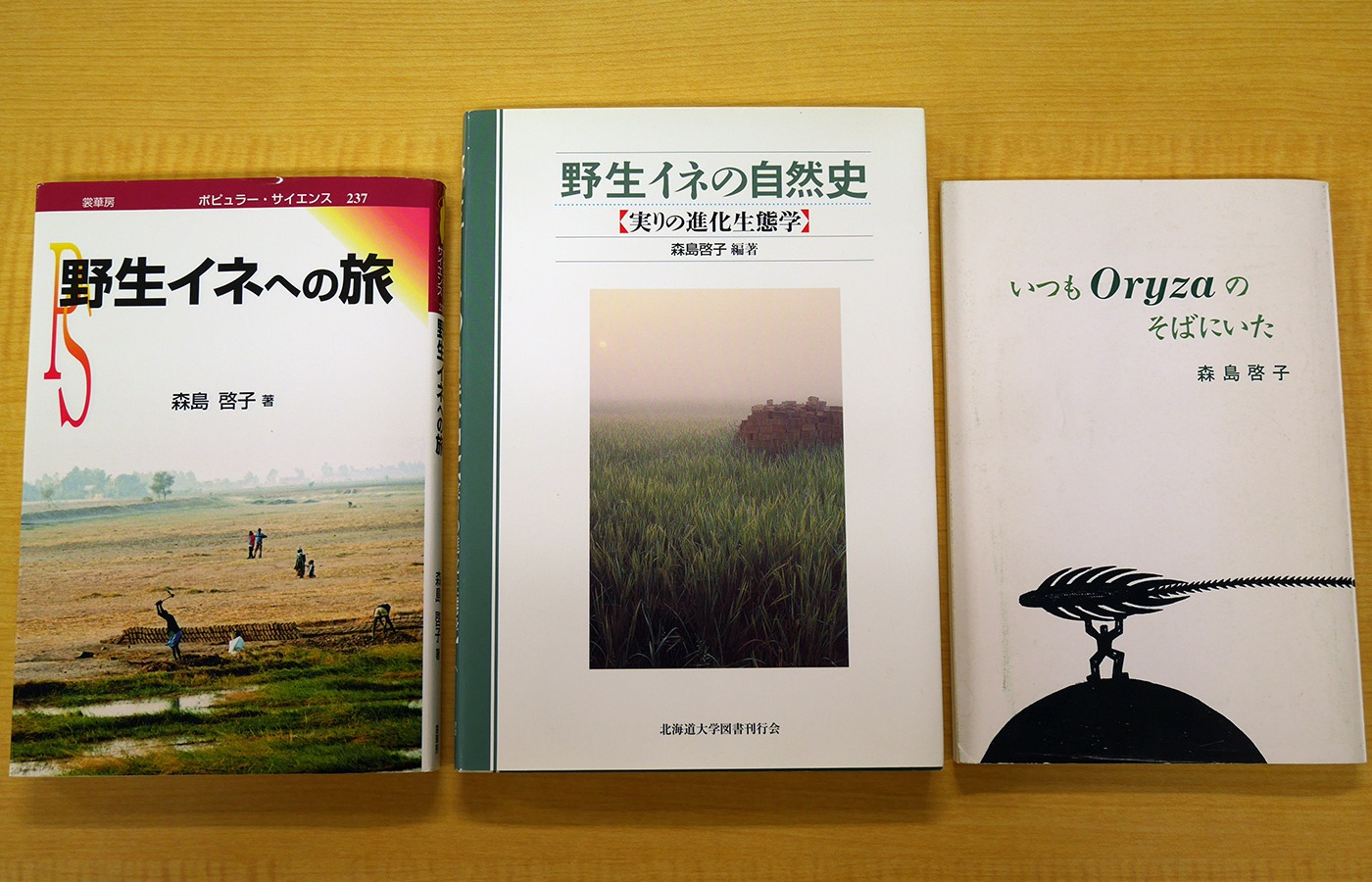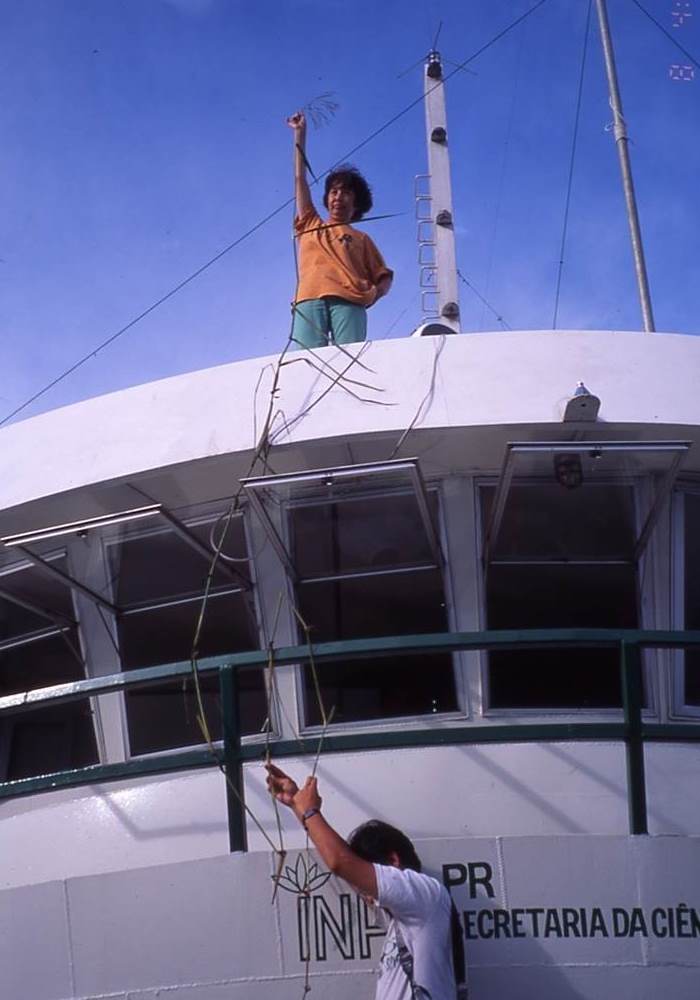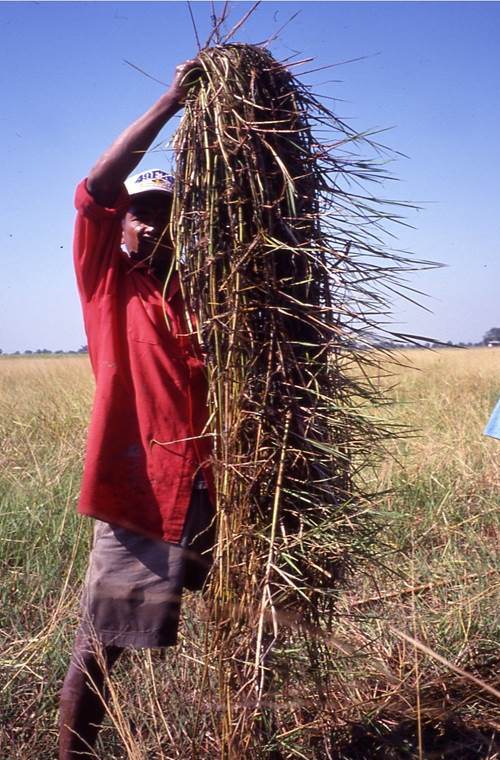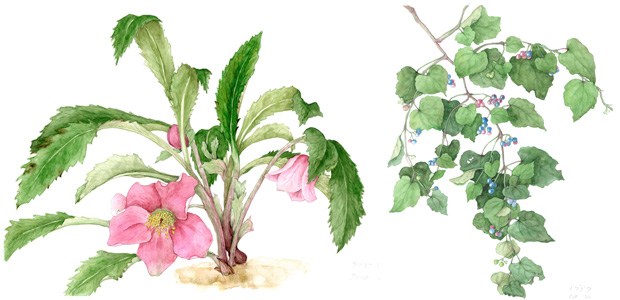MORISHIMA, Hiroko — Professor Emeritus —

After graduating from the University of Tokyo, Dr. Morishima devoted over 40 years of research on rice genetics at the National Institute of Genetics (NIG). Following her passing at the age of 76, the “Morishima Award” was established to recognize outstanding graduates from NIG, using the donation from her family (the “Morishima Fund”). Here we follow the footsteps of Dr. Morishima through her writings and documents.
Documents and information for this article were provided by prof. Nori Kurata (Plant Genetics Laboratory, NIG).

Biography of Dr. Morishima
Hiroko Morishima graduated from the Faculty of Agriculture at the University of Tokyo in 1958, during a time when female scholars and students were rare. Tomoko OhtaFootnote1was her senior in the Faculty of Agriculture, and Michiko GoFootnote2was a fellow member of a drama group. Immediately after graduation, Morishima became a research fellow at NIG, and five years later, she earned her Doctorate in Agriculture from the University of Tokyo. In the late 1970s, she and Ohta, who had completed her PhD studies in USA, were both appointed Head of the Laboratory (equivalent to today’s Associate Professor) at NIG and started leading their own research groups. In the 1980s, they became the first and the second female professor at NIG.

Wild Rice along the Amazon River.
(Photograph by Dr. Masashi Ohara)
Dr. Morishima concentrated her 40+ years of research on the genetics of rice. When she joined NIG, two projects, sponsored by the Rockefeller Foundation, had just been launched. Dr. Morishima was recruited as a research fellow by one of these projects, “The Study of the Origin of Cultivated Rice”. The rice cultivars that we currently consume were established during human history from wild rice species. They have been chosen based on various features favorable for cultivation, and then by selective breeding. In order to determine which parts of the wild rice genome have been passed on to rice cultivars, this project examined the diversity of genetic features in wild rice. This was a fascinating research in terms of both practical use and evolution.

Thailand with Extensive
Underground Stem.
Under the guidance of Dr. Hikoichi Oka, Dr. Morishima began collecting and analyzing wild rice around the world. A common image of rice may be crops with drooping heads in rice fields, but wild rice can have many different appearances. While many rice strains leave offspring by dropping seeds, some proliferate by extending underground stem (Photo left). In some strains seeds sprout the following year, while in others it may take more than a decade. How are these diverse phenotypes controlled? How were such features selected or acquired during the course of evolution? Such questions became the major focus of Dr. Morishima. Her research on these outstanding questions still serves as a basis of rice genetics today. In recent years the genomes of wild rice collected over the years are rapidly being determined through high-speed/large-volume genome analysis technology. Combining these genomic data with network analysis and large-scale data analysis, we hope to gain new insights into the diversity and environmental adaptability of wild rice, and to obtain results that can lead to the development of new improved strains of rice.
For Future Generations
Dr. Morishima’s activity was not limited to research; she was also an advocate of better labor conditions for female researchers as well as the maiden name usage at work. During her child-reaisring years, Dr. Morishima and her husband made a point of living at a location with equal commuting time, because both valued their spouse’s career and shared childcare and housework. Dr. Morishima longed for a society in which both man and woman can just be oneself:
In order to achieve a successful career in America as a woman, it is said that you must fulfill the following three conditions: 1. Work like a dog (snip); 2. Think like a man; and 3. Behave like a lady. Although some may think this way, I wouldn’t want to endorse the idea that you cannot achieve success unless you are a superwoman. In fact I don’t like any of these three conditions. (snip) I wish for a society in which both man and woman can be just oneself, and be recognized by their individual abilities. Footnote3
Following the elegant yet forceful footsteps of Dr. Morishima, her daughter acquired a fondness for nature observation, managed to obtain her own astronomical telescope, and eventually entered academia herself. After Dr. Morishima’s passing, she offered a donation in the name of her mother and stated, “My mother had enjoyed a long and happy life at NIG. I believe that she will be pleased if what she had left behind is put to use again at the institute.”

The use of the donation was decided based on Dr. Morishima’s personality and experience: she had a lifelong passion for teaching; upon visiting many countries for field study she was distressed about economic disparities that she had seen there. It was thus decided that the fund should be used for activities to support graduate students: an interest-free loan was established for students needing financial aid; an award named after her — the “Morishima Award” — was created to honor outstanding PhD theses. In 2014 the first award was given to Hideaki Kanzawa, who continues to do excellent science on molecular anthropology Footnote.
Thus Dr. Morishima’s legacy lives on to support and encourage NIG students and beyond.
Footnote
1. Dr. Tomoko Ohta. Graduated from the Faculty of Agriculture at The University of Tokyo in 1956. Professor Emeritus at the NIG/SOKENDAI.
2. Dr. Michiko Go. Graduated from the Faculty of Science at the Ochanomizu University in 1962. Former President of Ochanomizu University; a former board member of the Research Organization of Information and Systems; and a board member of Nagoya University.
3. Excerpt from the article, “Quota sei ni omou (My Thoughts on the Quota System),” from Gakujutsu no doko (Trends in the Sciences), November 1996 edition.
4. Hideaki Kanzawa receives “Morishima Award”
(Text translated based on the interview conducted by Machiko Itoh, Office for Research Development in December, 2015)
Back














